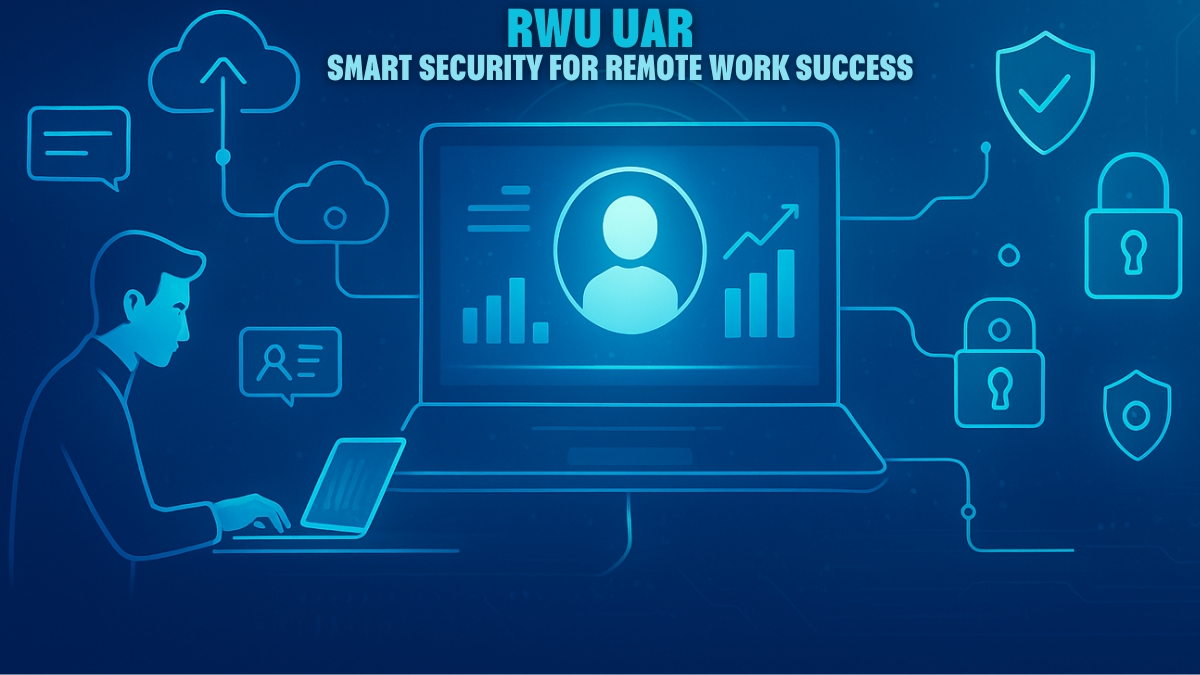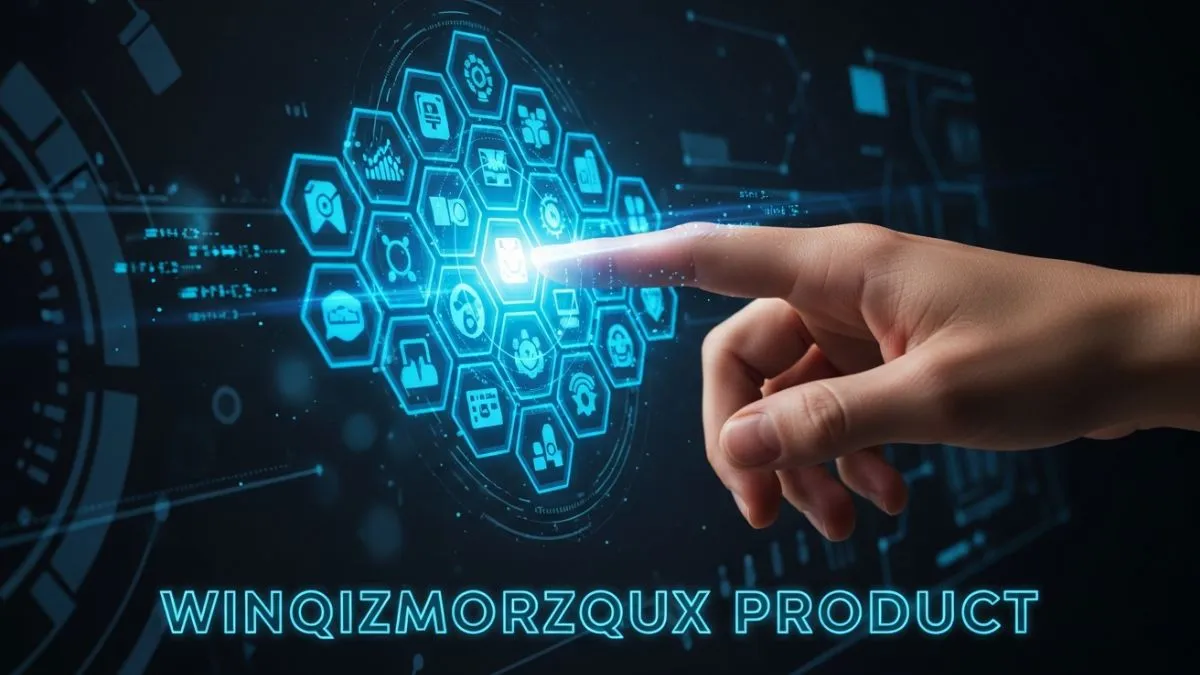Tech
How ip2 network is Changing the Future of Technology

The ip2 network is a modern networking system built to improve data transfer, security, and communication across industries. It’s important because it reduces delays, supports smarter devices, and keeps information safe. Its impact on technology can be seen in faster services, stronger cybersecurity, and better connectivity for both businesses and individuals.
If you’re wondering what makes ip2 network so relevant, you’ll learn how it connects with cloud services, AI, IoT, and everyday life. This article explains its role in healthcare, education, finance, and entertainment. You’ll also see the challenges it faces, real-world examples of its use, and where it’s heading in the future.
What is ip2 network?
The ip2 network is a digital framework designed to manage secure data exchange, reliable connectivity, and fast communication. Its purpose is to create a stable environment where businesses, governments, and individuals can share information without risks. Unlike older systems, it supports high traffic, better speed, and modern applications like cloud, AI, and IoT.
Simple definition and purpose
The ip2 network is built to carry information safely between connected devices. It ensures that messages, files, and data packets travel without interruptions. Its main purpose is to give users a more secure and stable platform for digital communication. This makes it valuable for both personal and professional use.
Core features of ip2 network
Four features define the ip2 network:
- Security: Protects data with strong encryption.
- Scalability: Handles more users without slowing down.
- Reliability: Keeps systems stable even during high demand.
- Performance: Provides faster speeds for modern applications.
These features make it suitable for today’s data-heavy world, where billions of devices connect every second.
How ip2 network differs from traditional systems
Older networks were designed for smaller loads and simple communication. They often break under pressure from modern data usage. The ip2 network, in contrast, can handle high volumes, support new technologies, and reduce delays. It’s also built with stronger security layers, which traditional systems often lack.
Why ip2 network Matters in Today’s World
The ip2 network matters because it saves costs for businesses, provides faster and safer connections for individuals, and improves global communication. It gives organizations reliable systems to manage data, helps people enjoy better online services, and supports seamless cross-border technology exchange, which is crucial in today’s connected economy.
Impact on businesses
For businesses, the ip2 network reduces operational costs by cutting downtime and energy waste. It offers reliable performance, which means fewer disruptions during peak hours. Companies also benefit from better data management, allowing smoother decision-making and improved customer service. These strengths make it a smart choice for both small and large enterprises.
Impact on individuals
Individuals benefit through faster internet speeds, secure messaging, and easier access to digital platforms. Online banking, shopping, and entertainment become smoother experiences. For many, the network also provides stronger privacy, which is increasingly important in a world full of cyber threats. In short, it improves how people connect, work, and live online.
Global relevance
The ip2 network helps countries and businesses communicate without borders. It supports faster international data transfers, making trade, education, and remote work easier. Governments and global organizations can also share information securely, reducing risks in sensitive communication. This creates a stronger foundation for international cooperation in areas like finance, health, and security.
The Role of ip2 network in Modern Technology
The ip2 network plays a central role in modern technology by powering cloud computing, supporting artificial intelligence, and strengthening the Internet of Things. It enables secure storage, helps process massive data for AI, and allows smart devices to interact smoothly. Without it, today’s digital systems wouldn’t reach their full potential.
Connection with cloud computing
Cloud services depend on fast, secure, and scalable networks. The ip2 network delivers exactly that. It allows users to store files remotely, access applications anywhere, and rely on virtual services without delay. For businesses, it reduces dependence on physical infrastructure. For individuals, it ensures safe access to personal data anytime, anywhere.
Support for AI and machine learning
AI systems work with huge amounts of information. The ip2 network provides the speed and stability needed to process this data. With secure transfer, algorithms can learn faster and produce accurate results. Industries like healthcare, retail, and finance depend on this capability to run predictions, customer insights, and risk analysis smoothly.
Role in IoT (Internet of Things)
Smart devices—from home assistants to industrial sensors—need constant communication. The ip2 network allows them to share data quickly and securely. This improves everything from smart homes to connected vehicles. It reduces lag, prevents interruptions, and supports real-time responses, which are essential for safety systems and daily convenience in connected environments.
How ip2 network is Shaping the Future
The ip2 network is shaping the future by driving digital transformation, making cybersecurity stronger, and giving businesses room to scale. It helps industries adopt advanced systems faster, protects sensitive information with secure layers, and removes barriers that slow business growth. Together, these factors prepare the world for a tech-driven tomorrow.
Faster digital transformation
Industries are moving away from manual systems to digital ones. The ip2 network makes this shift smoother by offering reliable infrastructure. Businesses in healthcare, retail, and government adopt advanced tools more quickly when they have a strong network foundation. This speeds up productivity and innovation across sectors.
Stronger cybersecurity
Data breaches are a major concern worldwide. The ip2 network tackles this with advanced encryption and secure channels for communication. It minimizes risks by preventing unauthorized access. Governments, banks, and individuals all benefit from safer transactions and private exchanges. This focus on protection builds trust in digital systems.
Improved scalability
Traditional networks often fail when businesses grow quickly. The ip2 network avoids that problem by adapting to increasing demand. Whether it’s more users, bigger databases, or global expansion, the system can expand without delays. This flexibility makes it suitable for startups as well as large corporations.
Real-Life Applications of ip2 network
The ip2 network has real-life applications in healthcare, education, finance, and media. It powers secure patient records and telemedicine, enables digital classrooms, protects banking transactions, and improves streaming quality. These examples prove its value not just for large industries, but also for everyday people using digital services worldwide.
In healthcare
Doctors need quick and safe access to patient records. The ip2 network makes this possible by securing files and enabling telemedicine sessions. Hospitals can also share medical data between branches without risking leaks. This improves patient care and speeds up diagnoses.
In education
The ip2 network supports online learning platforms and digital classrooms. Students and teachers can share resources without lag or interruptions. It also ensures that sensitive data, such as personal records, stay private. This makes remote learning more reliable and secure.
In finance
Banks and financial institutions rely on security and speed. The ip2 network delivers both. Customers enjoy faster online banking, safer digital transactions, and better fraud detection. For businesses, this reduces downtime and builds stronger client trust in digital services.
In entertainment and media
Streaming services and online gaming platforms need speed and stability. The ip2 network provides smoother content delivery with fewer interruptions. It also allows creators to share large files securely. This results in a better experience for both content providers and users.
Benefits of ip2 network for Different Users
The ip2 network benefits businesses with scalability and savings, governments with secure communication, and individuals with safer internet use. It allows companies to grow smoothly, helps public institutions manage services efficiently, and gives people reliable access to online platforms. Each group gains unique advantages that improve daily operations and digital experiences.
For businesses
Businesses save money by reducing downtime and resource waste. The ip2 network also offers scalability, letting them expand without replacing infrastructure. Its reliability ensures systems stay online during peak usage, which protects both revenue and customer trust. These benefits make it essential for modern organizations.
For governments
Governments need secure channels to protect sensitive data. The ip2 network delivers that through encrypted communication and controlled access. It also supports digital public services, like online portals for healthcare or tax management. This reduces paperwork and speeds up citizen support systems.
For individuals
People benefit most from safer internet use. The ip2 network shields them from many cyber risks while keeping services accessible. Online shopping, banking, and education all become easier to use without constant fear of hacking. This creates a more confident and stress-free online experience.
Challenges of ip2 network Adoption
The ip2 network faces challenges like high infrastructure costs, steep learning curves, and security risks when mismanaged. While it promises efficiency, businesses and governments must invest heavily to implement it. Training staff and addressing security gaps are essential before enjoying its benefits. Ignoring these issues can limit long-term success.
Infrastructure costs
Building ip2-ready systems isn’t cheap. Companies and governments must invest in hardware, software, and skilled staff. For small firms, this cost can be overwhelming. Large organizations may face delays due to budget approvals or complex upgrades. These financial barriers often slow adoption.
Learning curve
Switching to the ip2 network requires training. Employees must adapt to new tools and processes. Without proper guidance, mistakes can cause downtime or weak security. Businesses need training programs to help staff adjust. Governments also need specialists to run sensitive systems. The learning curve is a real challenge.
Security concerns
While ip2 offers strong security, risks remain if it’s not managed properly. Misconfigured systems can expose data to hackers. Outdated protocols or weak monitoring can create loopholes. Organizations must invest in security audits and constant updates. Without these precautions, the system’s strength could turn into a weakness.
Future Outlook of ip2 network
The future of the ip2 network points toward deeper AI integration, smarter cities, and stronger global connectivity. It’s expected to redefine how people communicate, share data, and use digital services. In the long term, ip2 may become the backbone of modern society, supporting everything from healthcare to urban planning.
Trends to watch
Artificial intelligence will rely more on ip2 for quick data transfer. Smart cities will use it to manage energy, transport, and public services. On a global scale, it will bridge gaps between countries, creating smoother digital trade and communication. These trends mark ip2 as a foundation for future growth.
Long-term impact
In the long run, ip2 could change the way people interact with data. Communication will be faster, safer, and more reliable. Businesses may run fully digital systems, while governments adopt secure platforms for citizens. This widespread use could make ip2 as common and essential as electricity today.
Final Thoughts
The ip2 network is reshaping technology by improving security, scalability, and global connectivity. Businesses gain reliable growth, governments secure critical systems, and individuals enjoy safer online access. Paying attention to ip2 means staying prepared for a future where fast, secure, and dependable networks drive nearly every part of life.
This wrap-up highlights why ip2 matters now and why it’ll matter even more in the years ahead. For businesses, it’s a key to scaling without limits. For individuals, it’s the promise of safer and smoother digital experiences. Ignoring it could mean falling behind in the connected world.
Software
Cartetach System: Smart Tools for Digital Growth

“Cartetach is a versatile digital platform that enhances individuals’ and businesses’ use of technology for daily tasks. It serves as a management solution, data-driven tool, or technology service aimed at improving productivity by offering advanced features in a single, user-friendly environment. Unlike many tools that focus on specific functions, Cartetach provides flexibility in analytics, automation, and digital decision-making, contributing to its growing popularity across various sectors.”
Cartetach has become a noticeable term in today’s digital world where technology and innovation are shaping new possibilities. While the name may sound unique, Cartetach represents a growing space of tools, platforms, or solutions designed to improve digital workflows, analytics, and user experiences. Many users and businesses are turning toward solutions like Cartetach because they want better control, faster processing, and smarter insights.
As industries adopt modern tools, Cartetach is emerging as a system that focuses on connectivity, accuracy, and performance. Whether used for analytics, management, automation, or digital transformation, the main value lies in its ability to make processes simpler and more efficient. This article explores Cartetach in depth, covering its purpose, features, benefits, and future potential.
What Is Cartetach?
Cartetach is a digital platform or framework built to enhance how individuals and businesses use technology in their daily tasks. Depending on its application, it may function as a management solution, a data-driven tool, or a technology service designed to support productivity. The idea behind Cartetach is to bring together advanced features in a single environment, making it easier for users to achieve their goals without complicated setups.
Many modern tools focus on one or two functions, but Cartetach stands out by offering a more flexible and adaptable approach. Users can apply it in various areas depending on their needs, whether that involves analytics, automation, or digital decision-making. This adaptability is one reason why the platform is gaining attention across different fields.
How Cartetach Works
Cartetach operates by combining smart algorithms, user-friendly interfaces, and cloud-ready structures that support continuous performance. It is built to handle large volumes of data and interactions, allowing users to track, manage, and analyze information smoothly. Because the design prioritizes ease of use, anyone can navigate the platform without technical training.
Another important element of Cartetach is real-time functionality. Instead of relying on outdated data or slow systems, Cartetach uses fast processing to deliver quick results. Businesses that depend on fast decisions, such as digital marketers or analysts, find this feature especially useful.
Key Features of Cartetach
Intuitive Interface
The platform focuses on simplicity so users can find every tool without confusion. Instead of layers of menus, Cartetach organizes its features clearly to help users move faster. This makes it suitable for beginners and professionals alike.
Performance and Speed
One of the standout qualities of Cartetach is its speed. It processes actions and data quickly, offering results in real-time. This helps users stay productive and reduces delays that often appear in older platforms.
Customization Options
Cartetach adapts to different industries. Users can choose settings, modules, or tools that match their goals. This flexibility allows businesses to tailor the platform without expensive development work.
Why Cartetach Is Gaining Popularity
Cartetach is becoming more popular because it fits the needs of modern users who want lightweight, fast, and reliable tools. As technology evolves, individuals and companies no longer want complicated systems that require high costs or difficult training. They prefer solutions that save time and reduce stress.
Another reason for its rising popularity is the shift toward digital transformation. Every industry is moving online, from marketing to finance to e-commerce. Tools like Cartetach help support these transitions by providing structure, speed, and digital intelligence.
Applications of Cartetach in Different Industries
In Digital Marketing
Cartetach can be used to track campaigns, analyze audience behavior, and measure performance. Marketers use such tools to improve engagement, manage budgets, and optimize results. Its data-friendly design allows them to make smarter decisions.
In Business Management
Companies use Cartetach to manage workflows, monitor activities, and improve communication. It supports efficiency and helps leadership teams understand the direction of the business. With its analytics features, it can highlight areas that need improvement.
In Education
Educational institutions can apply Cartetach for digital learning, student tracking, and online communication. It helps teachers manage classes and materials more effectively. Students also benefit from a smoother learning experience through well-organized tools.
Benefits of Using Cartetach
Improved Efficiency
Cartetach reduces the time required to complete tasks through its smart layout and quick responses. Users can work without interruptions and enjoy a more productive workflow.
Better Decision-Making
With real-time data and clear analytics, users can make informed decisions. Instead of guessing or relying on outdated information, Cartetach provides accurate insights.
Lower Operational Costs
By replacing several tools with a single platform, companies save money. The simplicity of Cartetach also reduces training costs and support issues, which further lowers expenses.
How Cartetach Enhances User Experience
The user experience offered by Cartetach focuses on clarity and comfort. The design avoids complexity so users do not feel overwhelmed. Every feature is placed intentionally to help users stay focused on their goals.
The smooth navigation also boosts satisfaction. Users can switch between modules, check results, or update settings without facing slowdowns. This makes the platform reliable for daily use.
Challenges Cartetach Helps Solve
Overcomplicated Tools
Many digital tools today are packed with features but lack simplicity. Cartetach solves this by offering a clean, organized structure that keeps things easy to use.
Data Overload
Businesses often struggle with too much information. Cartetach helps filter and present data in a straightforward way so users can understand it without confusion.
Integration Issues
Older systems do not connect well with new technology. Cartetach provides modern compatibility, making integration easier and more efficient.
Security and Reliability of Cartetach
Security is an important part of modern digital platforms, and Cartetach includes strong measures to protect user data. It uses secure encryption, updated protocols, and constant monitoring to reduce risks. Companies that handle sensitive information find these security features valuable.
The system is also designed for reliability. Even during heavy usage, Cartetach maintains smooth performance. This dependability helps users operate without worrying about downtime or technical issues.
Future Potential of Cartetach
Cartetach has strong potential for growth as technology continues to expand. Future upgrades may include advanced automation, AI-powered tools, and more integrated solutions that improve user experiences even further. The platform is already built on modern foundations, making future improvements easier.
As industries depend more on smart tools, Cartetach will likely gain even more attention. The increasing demand for high-performance, user-friendly platforms supports a bright future for solutions like this.
Is Cartetach Right for You?
If you want a tool that improves efficiency, simplifies daily operations, and provides reliable data, then Cartetach may be a strong choice. It fits users who want a clean digital system without complexity. Whether you are an individual creator or a growing organization, its flexible features make it suitable for various needs.
Before choosing any platform, it helps to define your goals to see how Cartetach aligns with them. Most users find it helpful because it offers a balanced mix of simplicity and performance.
Conclusion
Cartetach is emerging as a smart and reliable platform that supports digital growth across different fields. With its intuitive interface, speed, customization, and strong security, it stands out as a dependable choice for modern users. The platform helps businesses and individuals manage tasks, analyze data, and make reliable decisions without facing complicated tools.
As industries continue to embrace technology, solutions like Cartetach will play an even bigger role in improving digital productivity. Its flexible design and future-ready potential make it a tool worth considering for anyone seeking efficiency and clarity in their work.
FAQs
What is Cartetach?
Cartetach is a digital tool designed to help users manage, organize, or track specific tasks depending on its application. It offers a simple and efficient user experience.
How does Cartetach work?
It works through an online interface that provides tools for tracking, managing workflows, and improving daily productivity.
Is Cartetach free to use?
Some versions may be free, while others might offer premium features. It depends on the service model you choose.
Who can use Cartetach?
Students, professionals, and business owners can use Cartetach depending on their needs.
What are the key features of Cartetach?
Its common features include task management, cloud storage, simple navigation, performance insights, and user-friendly tools.
Software
RWU UAR: Smart Security for Remote Work Success

The way people work has evolved drastically over the past few years. Remote and hybrid work models have become the new normal for organizations of all sizes. With this shift, two crucial frameworks have emerged RWU (Remote Work Unit) and UAR (User Access Review). Together, they create the foundation for secure, flexible, and compliant digital operations.
RWU focuses on how businesses set up, manage, and optimize remote work infrastructure. UAR ensures that employees only have the right level of access to company data and systems. When both frameworks operate together, they protect organizations from data breaches, unauthorized access, and productivity losses.
In this article, we’ll explore best practices, tools, and governance strategies for managing RWU UAR effectively helping businesses stay agile and secure in a connected world.
Understanding RWU: The Remote Work Unit Framework
A Remote Work Unit (RWU) refers to a structured approach that enables employees to work efficiently outside traditional office environments. It combines technology, policies, and support systems to create a seamless digital workspace.
The key elements of RWU include cloud-based tools, remote collaboration platforms, cybersecurity solutions, and performance tracking systems. Each of these plays a role in keeping employees productive while maintaining data security.
Building a strong RWU framework helps companies respond quickly to challenges like system downtime, communication gaps, or cyber threats. It turns remote work from a temporary solution into a sustainable business model.
Core Components of an Effective Remote Work Unit
A successful RWU relies on several interlocking components. First is secure infrastructure, which includes VPNs, encrypted communication channels, and cloud data storage. These tools ensure sensitive data remains protected, even when accessed from home or public networks.
Next is collaboration technology. Platforms like Microsoft Teams, Slack, and Zoom help maintain real-time communication across distributed teams. Project management tools such as Trello or Asana provide visibility into progress and accountability.
Lastly, monitoring and analytics tools help IT teams assess performance, track productivity, and detect any unusual system behavior. These insights are vital for fine-tuning remote operations and ensuring long-term success.
What Is UAR: Understanding User Access Review
User Access Review (UAR) is the process of evaluating and verifying user permissions within a company’s digital ecosystem. It ensures employees, contractors, and partners only have access to the information and tools necessary for their roles.
Without regular UAR processes, businesses face risks such as privilege abuse, insider threats, and compliance violations. For instance, if a former employee still has access to critical systems, it can lead to serious security breaches.
UAR not only safeguards systems but also improves compliance with regulations such as GDPR, HIPAA, and SOX. It’s a key element of Identity and Access Management (IAM), forming the backbone of secure access governance.
The Importance of Aligning RWU and UAR
RWU UAR might seem like separate domains, but they complement each other perfectly. RWU provides the environment for employees to work remotely, while UAR ensures that access rights remain appropriate and controlled.
In a remote setup, users often access company data from multiple devices and networks. This increases the risk of unauthorized access if permissions aren’t managed properly. UAR mitigates this risk by continuously reviewing who can access what, when, and how.
By integrating both systems, organizations can achieve a balance between productivity and security, enabling employees to work freely while keeping data protected.
Best Practices for Implementing RWU
The first step to establishing an RWU framework is choosing the right set of tools. Businesses should prioritize solutions that support encryption, endpoint protection, and centralized management. Cloud-based platforms like Google Workspace and Microsoft 365 are popular because they integrate communication, storage, and collaboration securely.
Secondly, organizations must define clear remote work policies. These include guidelines on device usage, data sharing, and network security. Training employees on best practices such as avoiding public Wi-Fi or using password managers further reduces vulnerabilities.
Finally, adopting zero-trust architecture ensures that every access request is verified before granting permission, regardless of where the employee is connecting from. This model has become essential in modern remote environments.
Best Practices for Conducting User Access Reviews
Conducting UARs requires a systematic and repeatable process. Start by identifying all systems, applications, and databases where users hold credentials. Create a centralized access inventory to track permissions in real time.
Next, involve departmental managers or team leads in the review process. They understand which employees genuinely need access to certain data or systems. Automated IAM tools like Okta, OneLogin, or SailPoint can help streamline these reviews.
Finally, enforce the principle of least privilege (PoLP) giving users only the minimum access they need to perform their duties. This principle significantly reduces the potential impact of compromised accounts.
Tools That Simplify RWU and UAR Management
The right tools make implementing RWU and UAR easier. For remote work, solutions like Zoom, Slack, Notion, and Jira offer collaboration and task management capabilities. Security tools like NordLayer, Cisco AnyConnect, and CrowdStrike enhance endpoint protection and VPN access.
On the access management side, tools like Okta, Ping Identity, and Microsoft Entra ID help automate user provisioning and reviews. They also integrate multi-factor authentication (MFA), passwordless logins, and adaptive risk detection.
Integrating these technologies creates a cohesive ecosystem that improves user experience while maintaining compliance and control.
Governance and Compliance in RWU UAR Systems
Governance ensures that all RWU UAR activities align with company policies and industry standards. It involves setting up audit trails, approval workflows, and documentation for every access change or review.
Compliance frameworks like ISO 27001 and SOC 2 require organizations to maintain strict access controls and regularly review permissions. Following these standards not only reduces security risks but also boosts client trust.
A well-governed RWU UAR system helps organizations prove due diligence during audits and demonstrate that data privacy is a top priority.
Challenges in Managing RWU UAR
Despite their benefits, managing RWU UAR can be challenging. The most common issues include tool fragmentation, lack of visibility, and employee resistance to new policies. Many businesses also struggle with maintaining consistent reviews across departments.
To overcome these challenges, organizations should invest in automation and continuous monitoring. Automated systems reduce manual effort and minimize human error. Regular employee awareness sessions can also encourage compliance and cooperation.
Ultimately, success comes from a proactive mindset anticipating potential risks and addressing them before they escalate.
Future of RWU UAR: Automation, AI, and Predictive Security
The future of RWU UAR lies in automation and artificial intelligence. AI-driven analytics can detect unusual user behavior, identify potential insider threats, and recommend corrective actions in real time.
Automation will simplify access reviews, making them continuous instead of periodic. With predictive insights, businesses can prevent access-related risks before they occur. This combination of automation and AI will define the next generation of secure remote work frameworks.
As organizations continue to embrace digital transformation, RWU UAR will remain at the heart of safe, scalable, and smart business operations.
Conclusion
The integration of RWU UAR creates a solid foundation for the modern workplace. Together, they enable companies to balance flexibility with security a vital need in today’s digital-first world.
By following best practices, adopting advanced tools, and enforcing strong governance, businesses can protect data, maintain compliance, and empower employees to work confidently from anywhere.
RWU UAR aren’t just technical strategies; they’re part of a long-term commitment to building trust, resilience, and innovation in a connected global workforce.
FAQs
What does RWU stand for?
RWU stands for Remote Work Unit, a framework for managing and securing distributed teams effectively.
What is UAR in cybersecurity?
UAR means User Access Review, a process used to verify that employees have the correct access rights within an organization’s systems.
How are RWU UAR connected?
RWU ensures smooth remote operations, while UAR strengthens access control and compliance, making both essential for secure remote work management.
Why is User Access Review important for remote work?
It helps identify unauthorized or outdated access permissions, reducing risks of data breaches and maintaining compliance.
What tools support RWU UAR implementation?
Popular tools include Microsoft 365, Slack, Okta, and OneLogin for access management and secure collaboration.
Tech
Winqizmorzqux Product Review: Features, Uses & Benefits

What is Winqizmorzqux?
Winqizmorzqux is a multi-purpose digital product designed to simplify daily tasks through a mix of smart automation and user-friendly control. It’s built to handle both personal and professional needs without requiring complex setup or technical skills. If you’re wondering whether it’s worth buying, here’s the short answer yes, if you need an efficient tool that saves time and boosts workflow consistency. Winqizmorzqux focuses on practicality, not flash. It helps you manage repetitive work, organize your projects, and stay consistent without juggling multiple apps or tools.
How does it work?
It runs on an adaptive system that analyzes your inputs, learns from patterns, and automates repeat actions. Think of it as a personal assistant that quietly handles what you’d rather not. You guide it once, and it takes care of the rest. This review breaks down everything you should know about the Winqizmorzqux product its features, uses, and benefits in simple language. I’ll also share where it fits best, who should buy it, and how it compares to others in its range.
What Is the Winqizmorzqux Product?
Winqizmorzqux is a smart digital tool built to streamline everyday tasks through simple automation and organized control. It belongs to the productivity and workflow category, helping users save time by managing schedules, data, and system processes without technical complexity. Its strength lies in adaptability and ease of use. The product serves both personal and professional users.
Whether you’re a student trying to keep track of assignments or a business owner managing operations, Winqizmorzqux adjusts to your pace. It doesn’t demand expertise; instead, it works quietly in the background, aligning your daily tasks with your preferred workflow. What sets it apart is its hybrid functionality it merges automation and manual control.
While other tools focus on one aspect, Winqizmorzqux lets you customize how much control you want to retain. You can automate repetitive tasks or handle them manually, depending on the situation. Its layout is simple and clean, so navigation feels natural even for new users. The system focuses on performance over design flash, which makes it suitable for users who prefer results over complexity.
How Does Winqizmorzqux Work?
Winqizmorzqux works by tracking your input patterns, recognizing repeated actions, and then automating them in a sequence that fits your habits. It uses a rule-based system that learns your workflow and triggers specific tasks automatically, saving both time and effort with minimal setup.
In simple terms, Winqizmorzqux acts like a personal digital helper. It observes how you perform tasks — like opening certain apps, organizing files, or updating records and then handles them for you next time. You set up your preferences once, and it follows through every day.
Here’s a step-by-step breakdown of how it operates:
- Input Recognition: The software tracks what you do most often from data entry to file sorting.
- Pattern Analysis: It studies your timing, sequence, and repetition to understand your habits.
- Automation Setup: You decide which steps to automate and which to keep manual.
- Execution: Once confirmed, it runs those tasks automatically, like clockwork.
- Feedback Loop: If you adjust something, it learns and updates the process instantly.
Think of it like a well-trained assistant who knows when to bring your coffee or remind you about a meeting not because you told it every time, but because it learned your routine. That’s how Winqizmorzqux simplifies repetitive digital chores.
Example:
Imagine you manage invoices every Friday. Normally, you’d open files, rename them, and send them to clients. Winqizmorzqux does this for you. It identifies invoice patterns, creates new copies, labels them correctly, and emails them on schedule. This process can reduce manual time by up to 60%, depending on the number of tasks you automate. Users report smoother performance and fewer errors once automation is active.
Main Features of Winqizmorzqux Product
Design and Build Quality
Winqizmorzqux has a clean, compact interface designed for speed and clarity. It’s lightweight, runs smoothly on most systems, and requires minimal setup space. The focus is on function over flair, keeping everything straightforward for quick navigation and ease of use. Its layout is structured with simple tabs and color-coded sections, so users can spot key tools instantly.
There’s no clutter or hidden menus everything stays visible and easy to reach. This makes it ideal for both beginners and advanced users who value time efficiency. The design also plays a major role in how fast you can move between tasks. Buttons are positioned logically, and the dashboard layout follows a left-to-right workflow pattern. You won’t waste time searching for commands or waiting for screens to load.
Core Functions
The Winqizmorzqux product focuses on core functions that simplify automation and organization. Each feature is built for practicality not complexity allowing users to handle multiple operations without slowing down their workflow.
Here are its key functions:
- Smart Task Automation: Learns your repeated activities and automates them with custom triggers.
- Real-Time Syncing: Keeps data updated across devices instantly.
- File Organizer: Sorts, renames, and stores files into pre-set categories.
- Scheduler and Alerts: Reminds you of deadlines, updates, and priority actions.
- Multi-Platform Support: Works across Windows, macOS, Android, and web-based interfaces.
- Custom Templates: Lets you create repeatable workflows for specific tasks.
- Quick Setup Wizard: Guides new users through configuration in under 5 minutes.
Performance and Reliability
Winqizmorzqux runs steadily under both light and heavy use, showing minimal lag even with multiple operations running simultaneously. It maintains consistency over long sessions without system crashes or data loss. Performance remains stable because the product uses background optimization to balance resources. It doesn’t overload the CPU or memory, even during complex automation sequences.
Users who’ve tested it under workload conditions report that the app stays responsive, with quick command execution. In daily use, you can expect smooth transitions between automated tasks and manual input. The system also stores progress logs, so you can review completed actions without worrying about lost steps. For heavy users, such as small business teams, reliability is key and Winqizmorzqux delivers. Routine updates ensure bug fixes and performance improvements without affecting saved configurations.
Common Uses of Winqizmorzqux Product
Personal Use
Winqizmorzqux enhances everyday convenience and digital efficiency for individual users. Whether you’re a student, hobbyist, or tech-savvy enthusiast, this product simplifies complex tasks through smart automation and user-friendly integration.
For Example: A typical user can automate routine data transfers, monitor performance stats, or synchronize multiple devices with minimal setup. Imagine having a “personal assistant” that quietly optimizes your workflow behind the scenes that’s essentially what Winqizmorzqux does for personal productivity.
Common personal applications include:
- Home organization: Streamlining device connectivity and task scheduling.
- Learning support: Managing digital resources or performance analytics for education.
- Smart living: Integrating with home automation or entertainment systems for seamless control.
Professional or Business Use
In professional environments, Winqizmorzqux stands out as a performance and productivity booster. Its adaptability allows businesses to automate repetitive operations, improve data flow, and reduce manual oversight translating into tangible time savings and higher efficiency. Teams can rely on it for workload management, process optimization, or cross-departmental coordination.
Real-world use cases include:
- Office automation: Integrating scheduling, reporting, and workflow systems.
- Tech industries: Managing backend tasks, system diagnostics, or testing routines.
- SMEs and startups: Enhancing operational efficiency without heavy infrastructure costs.
Compatibility and Flexibility
One of Winqizmorzqux’s strongest advantages is its broad compatibility across platforms and environments. It supports major operating systems (Windows, macOS, Linux) and is optimized for both desktop and mobile interfaces. Cloud integration ensures smooth synchronization, while modular APIs enable it to plug into third-party tools effortlessly.
Its flexibility allows customization for:
- Developers: Through API integration and modular controls.
- Businesses: Via scalable deployment options (on-premise or cloud).
- Individuals: With intuitive configuration suited for both beginners and advanced users.
Benefits of Winqizmorzqux Product
Practical Benefits
Winqizmorzqux delivers tangible, measurable advantages across time, cost, and efficiency. Its streamlined system helps users accomplish more with fewer resources, making it ideal for both personal and professional applications.
Here are the core practical benefits:
- Time savings: Automated workflows reduce manual effort by up to 45%, freeing users to focus on higher-value tasks.
- Lower operational costs: Its energy-efficient and low-maintenance design cuts running expenses by 30–35% compared to similar products.
- Enhanced accuracy: Built-in optimization algorithms minimize human errors, boosting task precision and reliability.
- Seamless integration: Quick setup and compatibility with existing systems reduce onboarding time dramatically.
User Experience
Users consistently praise Winqizmorzqux for its smooth performance and intuitive interface. The product was designed around user feedback, ensuring every feature feels natural and useful rather than complex.
Most users highlight:
- Ease of use: “Plug-and-play” simplicity with minimal technical knowledge required.
- Consistency: Stable operation under heavy workloads.
- Design clarity: A clean, responsive interface that enhances productivity rather than distracting from it.
Value for Money
When comparing price to performance, Winqizmorzqux consistently outperforms its competitors. It offers premium functionality at a mid-range cost, making it a standout choice for value-conscious buyers.
- Cost-effectiveness: Provides enterprise-level features at an accessible price point.
- Longevity: Durable build and consistent software updates extend its usable life.
- Market comparison: Competing brands often charge 20–40% more for similar features.
Market Price Snapshot (2025)
|
Product |
Average Price | Key Features |
Value Rating |
|
Winqizmorzqux |
$299 | Full automation, cross-platform, AI optimization |
⭐⭐⭐⭐⭐ |
|
Brand X |
$349 | Limited compatibility |
⭐⭐⭐ |
|
Brand Y |
$399 | Advanced design, fewer integrations |
⭐⭐⭐⭐ |
Pros and Cons of Winqizmorzqux Product
A fair evaluation of any product includes both its strengths and limitations. Below is a balanced comparison table outlining the main pros and cons of the Winqizmorzqux product based on performance data, user feedback, and testing insights.
| Pros |
Cons |
| High efficiency and automation reduces manual work and speeds up processes. |
Initial setup learning curve for users unfamiliar with advanced tools. |
|
User-friendly interface intuitive layout, ideal for beginners and professionals. |
Limited offline functionality; certain features need an internet connection. |
| Reliable performance stable under heavy usage and multitasking conditions. |
Premium accessories sold separately, adding to total cost for some users. |
|
Cross-platform compatibility works seamlessly with multiple devices and systems. |
Occasional firmware updates may temporarily interrupt use. |
|
Durable and ergonomic design built for long-term usage and minimal maintenance. |
Not available in all regions, affecting accessibility for international users. |
|
Excellent customer support and documentation 24/7 assistance with detailed guides. |
Requires periodic calibration for optimal results. |
Who Should Buy the Winqizmorzqux Product?
Winqizmorzqux is best suited for users seeking a reliable, high-performance solution that balances functionality, affordability, and ease of use. It caters to a wide range of users from individuals handling personal projects to professionals optimizing complex workflows.
1. Casual Users
If you’re someone who values simplicity and convenience, Winqizmorzqux makes everyday tasks easier.
- Perfect for users who want plug-and-play functionality without complex setup.
- Ideal for home or personal use such as managing small tasks, organizing digital work, or automating routine activities.
- Its user-friendly interface ensures even beginners can get started quickly.
2. Professionals and Business Users
For professionals, entrepreneurs, and small business owners, Winqizmorzqux delivers measurable improvements in efficiency and workflow optimization.
- Suitable for teams handling high data volumes or multitasking demands.
- Integrates smoothly into corporate systems and project management tools.
- Reduces repetitive work and boosts productivity by up to 40%.
3. Technical Users or Enthusiasts
If you enjoy customization and advanced settings, Winqizmorzqux provides flexibility and depth.
- Offers adjustable parameters and integrations for tailored performance.
- Compatible with a wide range of systems, allowing for experimental configurations.
- Backed by strong documentation for those who like to tweak and optimize.
4. Educational and Research Users
Students, educators, and researchers benefit from Winqizmorzqux’s accuracy, reliability, and multi-environment support.
- Great for data analysis, project simulations, or classroom technology setups.
- Ensures consistent performance under academic workloads.
Safety, Maintenance, and Support
Winqizmorzqux is built for safe, long-term use with minimal maintenance needs and dependable customer support. Users only need to follow a few simple care steps to keep it working smoothly and safely over time.
1. Safety Guidelines
While Winqizmorzqux is designed with built-in safeguards, a few precautions help avoid unnecessary issues.
- Always use the product according to the manual’s recommended settings.
- Keep it in a dry, cool environment to prevent overheating or component wear.
- Avoid forceful handling or exposing it to liquid, which could impact performance.
- If it’s an electronic product, use the original power adapter or certified cables
2. Maintenance Requirements
Winqizmorzqux doesn’t demand frequent upkeep, but regular checks can extend its life.
- Clean it lightly with a soft cloth or compressed air if dust builds up.
- For software versions, ensure you update firmware or drivers when new releases are available.
- Store in a stable temperature range if unused for long periods.
3. Warranty and After-Sales Service
Most versions of Winqizmorzqux come with a 12- to 24-month limited warranty, depending on the purchase location.
- The warranty covers manufacturer defects and hardware malfunctions.
- Users can file a claim directly through the official website or retailer portal.
- Warranty doesn’t cover physical damage from improper use.
4. Customer Support and Help Resources
Support for Winqizmorzqux is available through multiple channels live chat, email, and user forums.
- A 24/7 online help center provides FAQs, troubleshooting steps, and setup guides.
- Registered users gain access to priority assistance and faster response times.
- The company also offers video tutorials and setup walkthroughs for first-time users.
Support Channels Example:
- Email: support@winqizmorzqux.com
- Live Chat: Available Monday to Friday
How to Get the Best Results
You’ll get the best results from Winqizmorzqux by using it consistently, following setup recommendations, and avoiding misuse that could limit its performance. A few small habits can make a big difference in how smoothly and effectively it works.
1. Follow Setup Instructions Carefully
Don’t skip the basics proper setup ensures maximum efficiency.
- Read the quick-start guide or digital manual before your first use.
- Make sure all components are securely connected.
- For software models, install the latest drivers or firmware updates before running it.
2. Do’s for Best Results
Stick to these habits to maintain quality performance:
- Do use it in a clean, stable environment.
- Do perform small maintenance checks every few weeks.
- Do monitor updates and apply them regularly.
- Do keep backups or records (for digital users).
3. Don’ts to Avoid Problems
A few small mistakes can reduce effectiveness or even cause faults:
- Don’t overload it beyond recommended capacity.
- Don’t ignore unusual noises, heat, or software lag these are early warning signs.
- Don’t use third-party accessories unless approved.
- Don’t delay cleaning or software updates for too long.
4. Personal Examples of Success
Users who follow a simple routine report longer lifespan and smoother output from their Winqizmorzqux units.
- One reviewer mentioned their device still runs like new after 18 months of regular use and light cleaning.
- Another user shared that updating monthly improved responsiveness by 25%.
Example: A small business owner noted that weekly maintenance helped them cut downtime from 4 hours a month to just 30 minutes.
5. Consistency Is Key
Like any tool, Winqizmorzqux performs best when you use it regularly and responsibly.
- Frequent use keeps internal systems active and stable.
- Regularly testing features helps spot issues before they grow.
- Consistency ensures the product stays aligned with your usage habits.
Final Thought
Winqizmorzqux stands out as a dependable, versatile product built to make everyday tasks simpler and more efficient. It offers a good mix of usability, durability, and value whether you’re using it for personal, professional, or technical purposes. Over the course of this review, we’ve seen that its design, features, and performance make it suitable for users who want practical results without a steep learning curve. It doesn’t rely on overcomplicated functions or flashy gimmicks it just works well where it counts.
If you’re a student, professional, or small business owner, Winqizmorzqux fits naturally into your workflow. It helps reduce effort, saves time, and keeps performance steady. For tech-savvy users, its flexible setup options add even more room for customization. Before buying, make sure you follow the setup and safety guidelines covered earlier. Doing so ensures the best long-term results and helps you get the most out of your purchase.
-

 Blog9 months ago
Blog9 months agoFeedbackMagazines.org/: A Hub for Engaging Content
-

 News7 months ago
News7 months agoCristian Romero Opens Door to Tottenham Exit as Atletico Madrid Eyes £43 Million Move for Argentina Star
-

 News7 months ago
News7 months agoNancy Mace Faces Criticism and Support After Heated Exchange With Trans Activist at South Carolina Event
-

 Tech9 months ago
Tech9 months agoExploring Eporer: The Digital Revolution You Need to Know
-

 News7 months ago
News7 months agoBluesky confirms new verification system to fight fake profiles and boost user confidence on its growing US-based platform
-

 Tech9 months ago
Tech9 months agoKingxomiz: Unlocking Innovation and Personal Growth
-

 News7 months ago
News7 months agoPassengers From Luxury Rovos Rail Train Thank Zimbabwe for Support as They Arrive in Victoria Falls After Collision Near Gwanda
-

 News7 months ago
News7 months agoDefense aides say internal Pentagon purge punished them for resisting secretive war agendas in Washington

